
The 20/25 Horsepower Class
Click for:
 or back to:
or back to:

| Click to Enlarge |
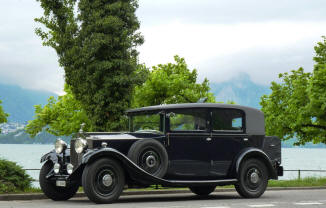
Click to Enlarge |
Click to Enlarge |
GZU7
1932 20/25 Milliners
Owner
Jonas Trachsel (Switzerland)
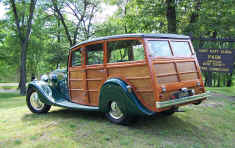
Click to Enlarge |
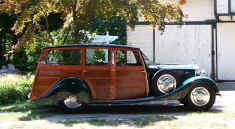
Click to Enlarge |
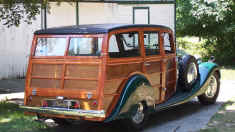
Click to Enlarge |
GPG78
1935 20/25 SHOOTING BRAKE
Owner
Douglas Kniff
GPG
78 started out life with coachwork from Hooper.
It was one of Hoopers standard design catalog item 5951 I’m sure with
the usual custom appointments as ordered by the original purchaser.
This particular catalog number indicates it was a 4 door 4 light sedanca
de ville or town car as we here in the states would refer to the design.
This certainly would be an attractive limousine today as it was then, had
it survived. The Hooper limousine
was delivered originally ordered and delivered to Captain Simon Orde who also
was an Earl but did not go by that title during service to the King. I
don’t take it as too much of a surprise that he was an Earl as I doubt the
wages of even a Captain would allow the means to acquire a Rolls Royce. What I
believe is one of the custom appointments and are still with the car are the
five forward looking Marchal lamps. My
good guess is that the Captain probably, as duty would require, would be
expecting to do some continental travel.
France
prior to the war had an ordinance on automobile lighting requiring two rather
than one low dip. Hence the large
lamps today still have high beam, low beam, and low-low beam as required for
city driving, along with the additional matching spot lamps for touring the
countryside late evenings. Another remnant retained from the Hooper coachwork
are the wings. They have that very
Hooper coachwork character, especially the rear wheel spats that are not very
fitting for a total makeover into a shooting brake that give the auto a unique
art deco carryover look. Captain
Orde was a captain in the Army with offices in
London
then. This ended up being the
Hooper coachworks undoing. During
WWII, as it happened, the Rolls Royce was in
London
as one of the bombing raids took place and a portion of a building fell
damaging the coachwork beyond use. For
the remainder of the war then, GPG78 sat in idle storage not to be repaired as
all production was dedicated to the war effort.
As here in the states, all peacetime production especially coachwork was
prohibited.
When hostilities ceased
peacetime automobile use was in huge demand.
GPG78 made for a perfect candidate to be rebodied.
A couple with an estate were put in touch with the Rolls Royce as they
had a use for a hunting transport. This
couple with an estate in
England
, aptly had a title, and their name was Lord and Lady Feather.
Through Windovers the Rolls Royce was purchased and commissioned to have
the “shooting brake” coachwork constructed.
Windovers were
established in Huntingdon in 1796 and were the originators and patentees of a
great number of designs and improvements in coach building before the motor car.
Once the motoring era had arrived it was realized that Huntingdon was too far
from the source of clients and chassis, and as a result a factory was acquired
in the early twenties at Collindale near
London
.
In this factory were
built the bodies for mounting on Rolls-Royce chassis, many going to
India
as Windovers had a large clientele among Indian Princes. During the
1939-45 War they concentrated on aircraft component manufacture, after which
they turned their attention to motor coach body construction and one of their
coaches was selected by the Council of Industrial Design to be exhibited in the
Transport Pavilion at the Festival of Britain, 1951.
GPG 78 had hunting
coachwork done by Windovers including solid Ash framing with interior and
exterior done in Russian Plywood.
Coach building on
Rolls-Royce chassis continued after the war until 1956 when the company was
taken over by
Henley
's Ltd., and all the coach building, private and commercial ended.
Lord and Lady Feather owned the
Rolls Royce until sometime into the early to mid 50’s at which time it was put
up and made available. The new owner
Wallace DuPont who was a scion of the chemical fortune purchased the shooting
brake for use as an estate wagon on his estate in
Delaware
. Upon arrival in the
United States
the Rolls Royce was repainted the DuPont family color of maroon and rather
unfittingly fitted with American truck lamps for turn signals.
With trafficators broken or disconnected she was placed into service.
Wallace DuPont owned the vehicle until his untimely demise.
Wallace was murdered in the early 60’s by thieves for his rare stamp
collection. This ended up being
exactly how the thieves were eventually apprehended by trying to peddle some of
the rare stolen stamps that led the police almost directly to the culprits.
For the next ten or more years the shooting brake remained tied up
in the estate, I believe out of doors much of the time,
until an auto broker from Connecticut found it and purchased the shooting
brake relieving the Rolls Royce from its unknown future.
Another example
of Shooting Brake coachwork on a 20/25
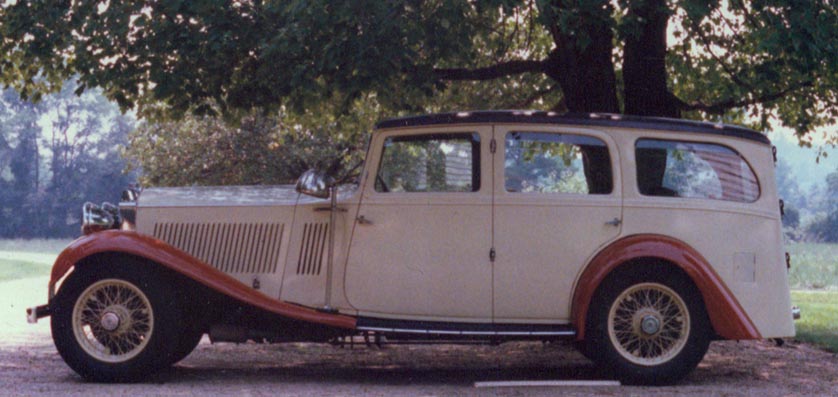
GGA76 owned by Peter Egeli





